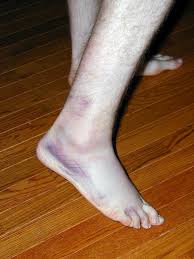It is not uncommon for an ankle sprain to hurt months after the initial injury. But why is that?
Even though the swelling subsided and the tissues have healed (or mostly), the “fine motor” control can be impaired. This fine muscle control is necessary to make up for the loss of some stability. The loss of stability happens when the ankle ligaments are stretched.
Along with impaired muscle control, the joint motion can also be just a bit off. Any time the ankle joint motion is not running as smoothly as it should, the opportunity for “pinching” can occur. It is often this pinching that people will report as uncomfortable or painful weeks or months following an ankle sprain.
But aren’t most people able to overcome their ankle sprain quickly?
Yes, a large percent of simple ankle sprains will resolve quickly and easily on their own. However, more severe sprains or those with repeat ankle sprains may require more care and guidance to return to tip top shape.
That said having professional guidance to avoid those annoying lingering symptoms months after the initial injury is wise. Not only that, but to help guide the individual such that they will not become one of those individuals who develop what is called chronic ankle instability. This happens as a result of multiple ankle sprains with incomplete recovery.
This incomplete recovery is when a person recovers just enough function to live life and do most activities, BUT does not do what is required to fully “re-stabilize” and strengthen the ankle. Too often, especially with athletes, the moment they feel they can play, they stop doing their “homework” for recovery. This is a mistake, one that often leads to subsequent injuries. And with each follow up injury, the recovery will take longer and more issues may present.
Thus, the wise move is to seek care of a muscle and joint specialist to guide recovery and work to make sure that person puts themselves in the best position to avoid re-injury.
Think these troubles won’t happen to you?
Well, maybe that is a risk you are willing to take.
But if you want to make sure your ankle is strong, stable, and less likely to become reinjured or deal with pain months after injury, then getting help and learning a program is right for you.
Have more questions?
Fill out this Quick FORM for a FREE phone consultation to learn what can be done to recover more quickly and prevent future injury.
